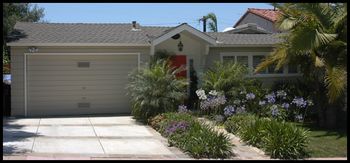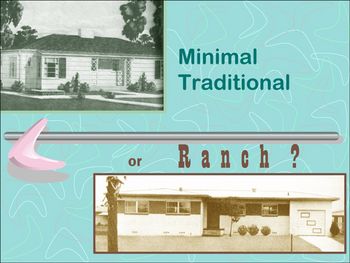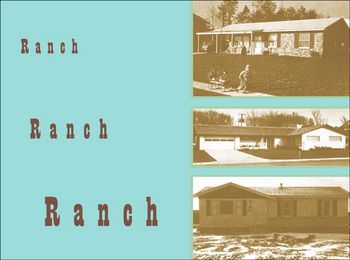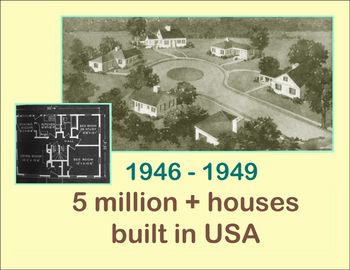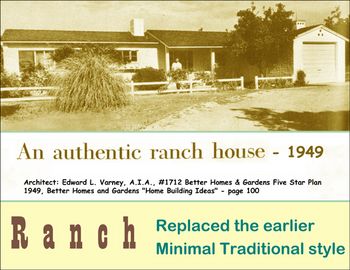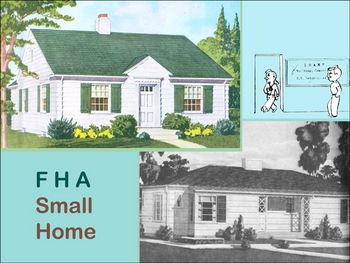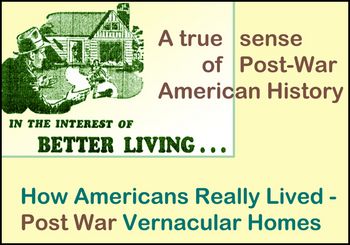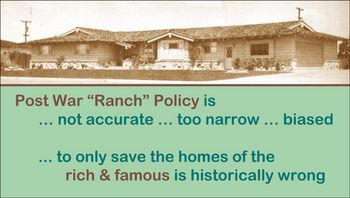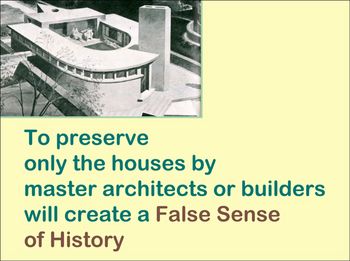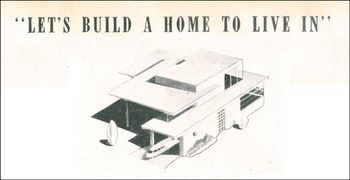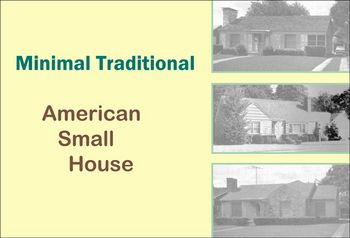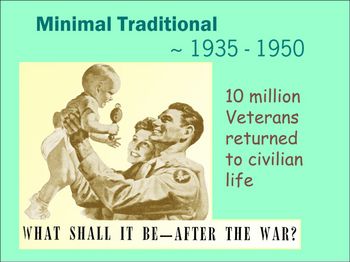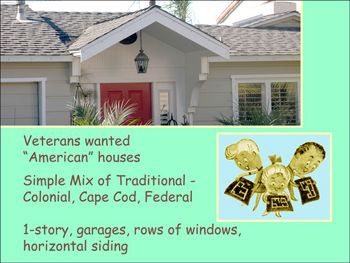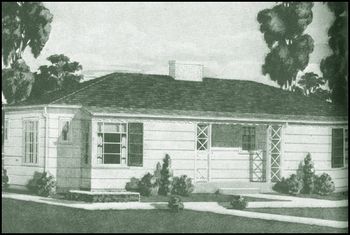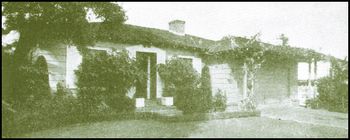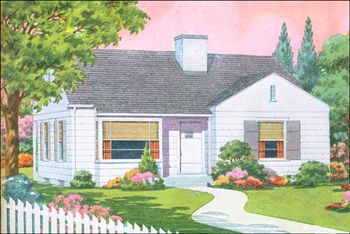|
|
 |
|
|
Mission Hills Community Identified as a Contributor to the Proposed Northwest Mission Hills Historic District |
|
|
| ||
|
|
On May 9, 2005, the Historical Resources Board accepted a new policy towards Post War houses - in particular, Ranch style houses. The concern was that ranch houses in San Diego's Post War housing tracts, such as Del Cerro, Roland Park, Alvarado Estates, San Carlos, Redwood Park, Linda Vista, Allied Gardens, Fleetridge, and Clairemont, were constructed by the thousands after World War II to house returning GIs. As these houses approach the threshold of 45 years or older, the questions becomes, "are they significant?" "How much of this vast housing production is individually significant?" and "How much of it should be preserved?" | ||
|
|
In 2005, the staff from the Development Services Department and Historical Resources Board attempted to wrestle with these questions for purposes of the city's 45 year review requirement. After the April 16, 2005 CLG (Certified Local Government) training workshop with the Historical Resources Board, the staff developed and adopted new procedures to evaluate post-war ranch houses, which the Policy Sub-committee of the HRB adopted on May 9, 2005. In essence, the new ranch, or anti-ranch, policy, directed staff to evaluate "modest" examples of ranch houses --- only as contributors to districts --- not as individually significant resources. | ||
|
|
The new policy suggests that housing tracts from the Post-War period that appear to have potential for historical district status could be Del Cerro, Alvarado Estates, Roland Park, Rolando, San Carlos, Scripps Estates, and Fleetridge. The communities of Linda Vista, Allied Gardens, and Clairemont might be significant as early examples of master planning. But where does that leave the individual house, perhaps an infill house in an already estblished older neighborhood? And what about Post War houses that really are not Ranch style? | ||
|
|
Legacy 106, Inc. found itself in disagreement with staff's evaluation of this house, and the new Ranch policy for a number of important reasons. Because they are both Post War houses, Minimal Traditional houses should not be dismissed as Ranch Houses. In fact, Post War Vernacular houses, including Minimal Traditional houses, were often custom designed, in-fill housing developed under Federal housing policies that embraced simplicity of design, efficient and modern features, and "American" design themes. | ||
|
|
| ||
|
|
| ||
|
|
| ||
|
|
In San Diego, unless a Post War modern house is found to be significant under other HRB Criteria, such as its association with an important person, it is presumed to be NOT architecturally significant and can be cleared from further review during the development process. However, Legacy 106, Inc. believes this policy is ill-advised and needs to be reconsidered. Does this mean we can only save the modern homes of the wealthy? What about the homes of the averge GI Joe? | ||
|
|
| ||
|
|
| ||
|
|
| ||
|
|
| ||
|
|
| ||
|
|
| ||
|
|
| ||
|
|
| ||
|
|
| ||
|
|
| ||
|
|
| ||
|
|
Post War houses for the returning World War II Veterans' family are important because they can help us interpret the continuum of development of architectural styles in our neighborhoods. In many cases, these houses represent the final phase of build out in many neighborhoods. Today, they are threatened. Be they Ranch style, Minimal Traditional, Cape Cod Cottages, or Modern, these houses will be the Baby Boomer's dream. We'll say it... No Stairs. Simple Floor Plans. Cohesive, well thought out neighborhoods. Even realtors are beginning to appreciate the advantages of these small, simple homes. | ||
|
|
Les Christie, CNNMoney.com staff writer echoed the Ranch House Lament: . . .Pity the poor ranch house; it gets little respect at all. The simple, uncomplicated ranch style is, to its critics, no style at all. . . She adds: . . . Unfair! The design, in the right hands, can be beautiful, natural, casual and extremely livable. . . . As baby boomers approach their golden years, many will no doubt appreciate the attributes of the ranch house, especially its single-story convenience, connecting garage and ease of passage to the garden. In addition to those appeals, ranches will also please fixed-income residents with affordable purchase prices and low maintenance costs. Many take advantage of the style's natural affinity with the outdoors with lush gardens patios and swimming pools. All in all, it's hard to beat these ultimate ranches for their combination of livability and luxury. And why try? Just relax in the patio lounge chair as the steaks sizzle on the grill and count the blessings of living in ranch style. --- Les Christie, CNNMoney.com August 3, 2006 | ||
|
|
Legacy 106, Inc. believes these modern, Post World War II houses deserve more from us than a speeding pass towards demolition. In 1945, America was focused on building "A Home to Live in." Through modern design and the science of mass pruduction, we built better homes for less money. When the question was asked of servicemen on the front: "What are you fighting for?" - the answers in general were many and varied: "For freedom" - "for democracy" - "for good old Uncle Sam" - "against aggression" - "to end Fascism and Naziism" But the specific answer, the unanimous answer, from the humblest rookie to the topmost brass hat, was "To get this war over and all go home!" The Post War home was The American Dream, After Victory, Let's All Go Home! | ||
|
|
| ||
|
|
Home | Designations | Qualifications | Company Profile | Newsletter | Links Archaeology
& Historic Preservation www.legacy106.com |
|

